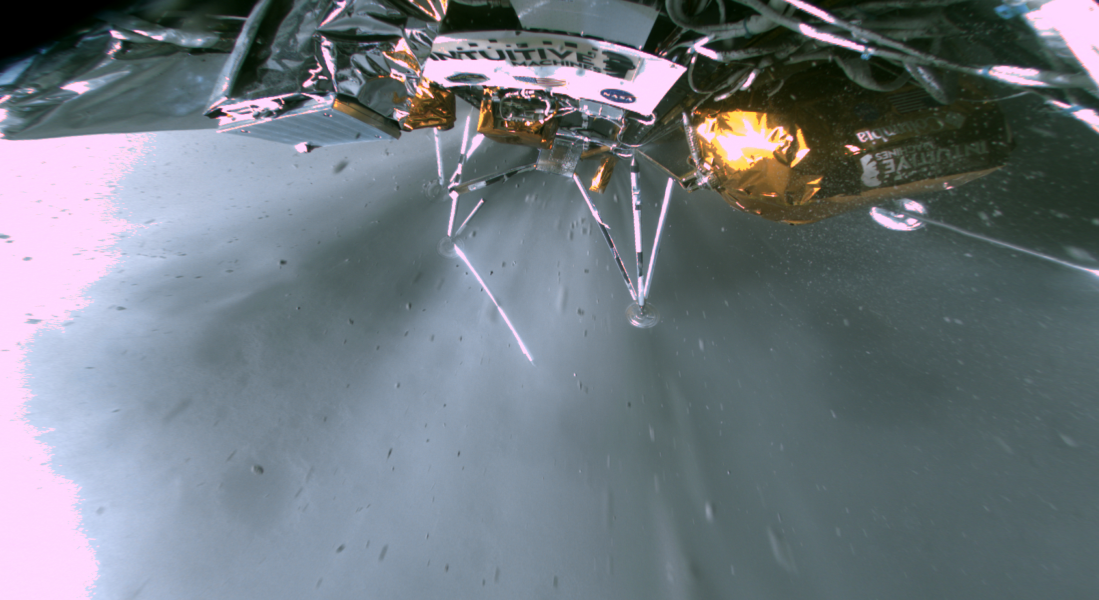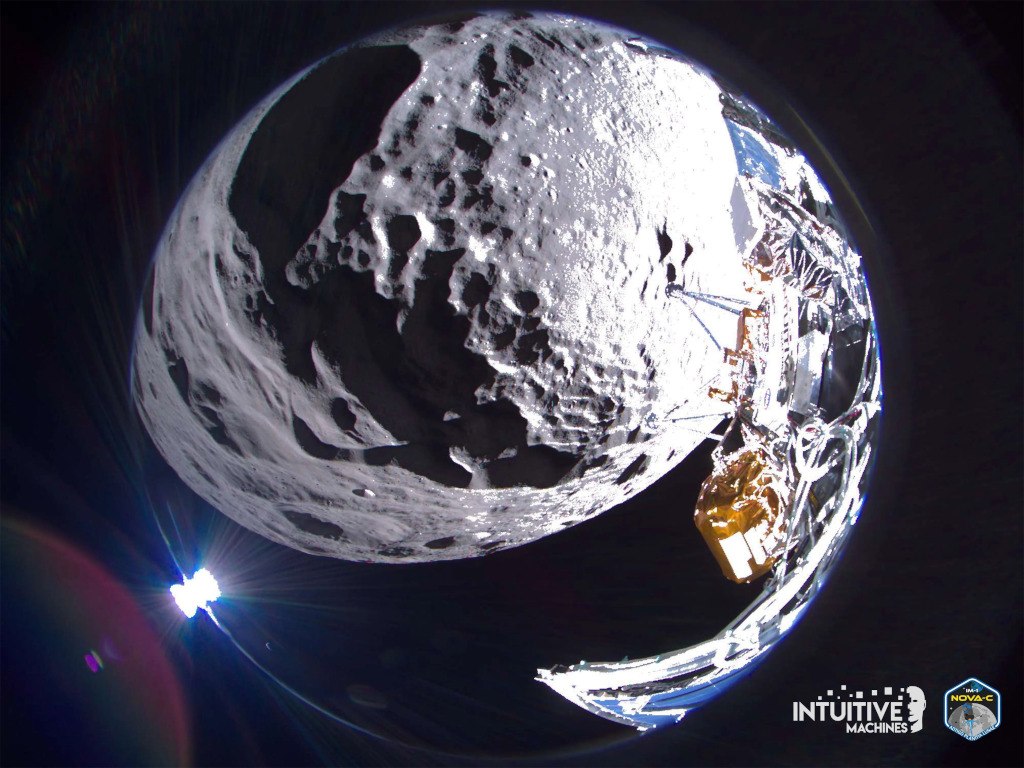2024年3月1日
Odysseus and The Dish
Image Credit & Copyright: John Sarkissian (ATNF Parkes Radio Observatory)
Explanation: Murriyang, the CSIRO’s Parkes radio telescope points toward a nearly Full Moon in this image from New South Wales, Australia, planet Earth. Bathed in moonlight, the 64 meter dish is receiving weak radio signals from Odysseus, following the robotic lander’s February 22 touch down some 300 kilometers north of the Moon’s south pole. The landing of Odysseus represents the first U.S. landing on the Moon since the Apollo 17 mission in 1972. Odysseus’ tilted orientation on the lunar surface prevents its high-gain antenna from pointing toward Earth. But the sensitivity of the large, steerable Parkes dish significantly improved the reception of data from the experiments delivered to the lunar surface by the robotic moon lander. Of course the Parkes Radio Telescope dish became famous for its superior lunar television reception during the Apollo 11 mission in 1969, allowing denizens of planet Earth to watch the first moonwalk.
Tomorrow’s picture: light-weekend
奥德修斯号与帕克斯望远镜
影像提供与版权: John Sarkissian (ATNF Parkes Radio Observatory)
说明: 在这幅摄于地球澳洲新南威尔斯省的影像里,帕克斯无线电望远镜直指几乎满相的月亮。 望远镜沐浴在月光中的64米口径天线碟,正在接收奥德修斯号的微弱无线电讯号,而这部无人着陆器,则于2月22日成功着陆在月球南极北方约300公里之处。奥德修斯号的著陆,标志了自1972年阿波罗17号任务以来美国的首次登陆月球。尽管奥德修斯号在月表的侧倾姿态,让它的高增益天线无法指向地球,但帕克斯望远镜庞大、可转动的高灵敏天线碟,大幅提升了着陆器回传的月表实验数据之接收效率。1969年在阿波罗11号任务期间,帕克斯无线电望远镜的天线碟,就曾以其出色的月球电视广播接收能力而闻名遐尔,让地球的住民得以观赏人类的首次月球漫步。
明日的图片: light-weekend



Pingback: 凯撒与闰年 – NASA中文